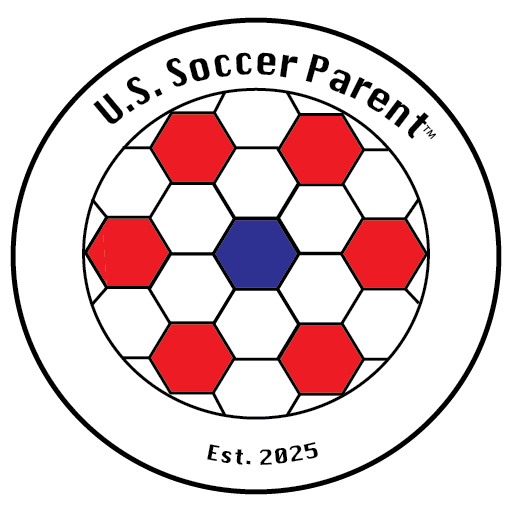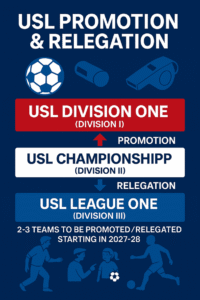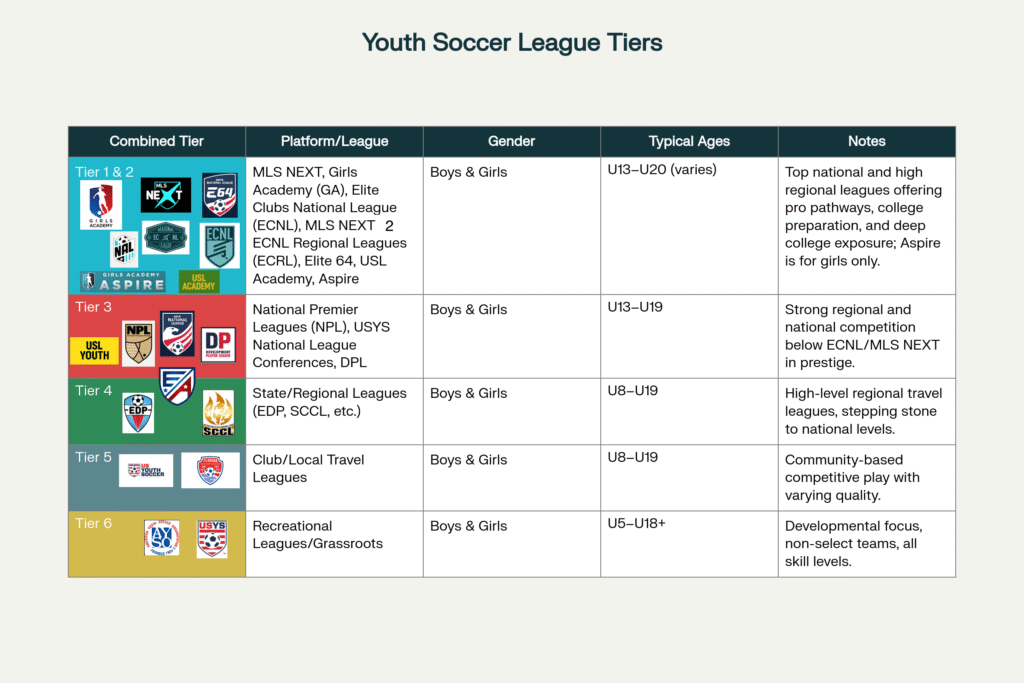What Parents Need To Know
Navigating the ever-evolving world of youth soccer can feel overwhelming for parents searching for the best opportunities for their young players. Two pathways gaining momentum in the U.S. are USL Youth and the USL Academy. But what do these leagues offer, and how do they differ?
Here’s a clear, parent-friendly guide to both—including what each pathway could mean for your child and answers to key questions parents often ask.
What Is USL Youth?
USL Youth is an integrated platform developed by the United Soccer League specifically to elevate the youth player experience. It’s designed for boys and girls from U12 through U19, focusing on providing competitive, organized matches during the summer months—and importantly, serving as an entry point into the broader American soccer landscape.
- National Competition: USL Youth include nearly 600 teams and 10,000+ players nationwide, culminating in the annual USL Youth Finals. That means your child faces diverse opponents, enhancing their soccer IQ and resilience.
- Open to All Levels: Unlike exclusive academies, USL Youth welcome clubs and players from a wide range of backgrounds, prioritizing community and inclusivity.
- Complementary Experience: The league typically runs during off-peak times (such as summer), allowing players to continue honing their skills with strong competition outside of their primary league season.
- Pathway to the Pros: Participation can serve as the first step toward higher-level soccer, especially for families who want their child to explore the youth-to-pro pipeline.
What Is USL Academy?
The USL Academy is the next step in the USL’s development approach, providing a direct link between elite youth prospects and professional USL clubs:
- Pre-professional Focus: Unlike traditional youth leagues, the USL Academy model emphasizes producing professional or college-ready players through direct connections with clubs in the USL Championship, League One, League Two, Super League, and W League.
- Age Range: Designed for players U20 and below, but teams must include younger athletes (U17 and under), ensuring developmental balance.
- One-Team Structure: Rather than fielding multiple squads for each age bracket, the USL Academy typically has a single “elite” team bridging U15–U20 players. This setup mimics reserve or “B” teams in global professional soccer, providing exposure to high standards and real pro pathways.
- Pro Calendar Alignment: The Academy follows a season schedule that mirrors the professional leagues, acclimating ambitious players to the rigors of professional play.
- Pathway Clarity: Players can sign USL Academy contracts, train and even compete with senior professional teams without sacrificing NCAA eligibility. This flexibility is unique—and means top players don’t have to choose between college and pro too early in their journey.
- College Advisory: Not every Academy player turns pro right away, so clubs also provide college advisory support, giving families multiple routes forward.
Can USL Youth or USL Academy Players Also Play on Other Teams?
USL Youth:
USL Youth is intentionally designed as a complementary program to a player’s main club season. USL Youth competition usually occurs during the summer or in specific event windows, rather than overlapping with primary league play. This setup allows most players to participate on their regular club or school teams during the main season and then join USL Youth matches or tournaments for extra development and exposure. There are no league rules requiring exclusivity with USL Youth teams, so players can continue to play for their club, high school, or even other sanctioned platforms, provided they meet the eligibility and registration guidelines of each.
USL Academy:
Similar flexibility exists within the USL Academy. Players can participate in Academy teams while still playing for their youth club or high school, as long as it fits local and national eligibility guidelines. Importantly, the USL Academy’s “elite” teams are often composed of top talent drawn from the surrounding region, and participation does not automatically prevent players from joining other teams. The USL actively encourages broad development, allowing players to gain varied high-level experiences in both the Academy and their regular club or school environment.
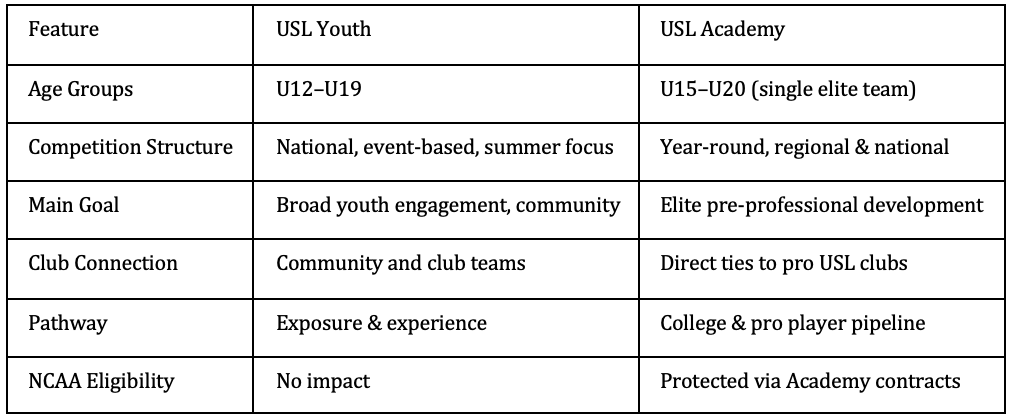
Does the USL Youth and USL Academy Provide a Clear Pathway to Professional USL Teams?
Yes, the USL has established one of the most transparent and accessible “youth-to-pro” pathways in the U.S. Players who stand out at the USL Youth or Academy levels can be scouted and invited to join their local USL club’s professional ranks. Success stories—where Academy players have moved up to sign USL contracts or even transferred to overseas clubs—are becoming increasingly common.
- USL Academy contracts allow players to train and play with the professional first teams without losing NCAA eligibility, making it possible to experience senior soccer while preserving future college options.
- Many clubs highlight former Academy players who successfully joined the USL Championship or League One squads, demonstrating that the pathway is real and achievable.
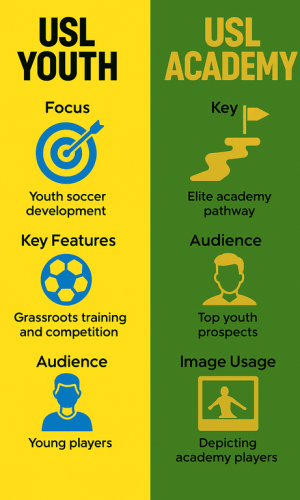
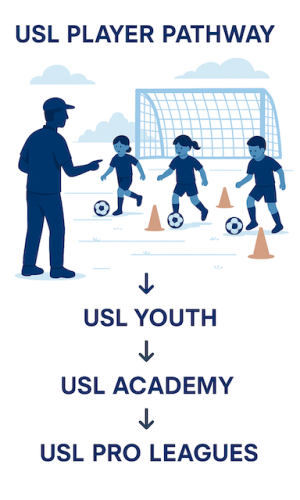
Is There Promotion or Relegation at the Youth and Academy Levels?
This is a developing area, and it’s an exciting time for American soccer
- At the professional USL level (Championship, League One): The USL is rolling out a promotion and relegation system among its professional tiers, making it the first league in U.S. sports to do so in a meaningful way. This means that club performance—on and off the field—can determine which tier a team competes in the following season. The rollout is expected to begin in 2026-2027.
- At the USL Youth and Academy levels: There is not a traditional promotion or relegation system for individual youth or Academy teams—these competitions are structured around age, regional divisions, and annual qualification for national finals or showcase events. The idea is to maximize development and exposure rather than create a high-pressure “win or get dropped” atmosphere for youth athletes. However, strong club performance at these levels can increase a club’s reputation, attract invitations to elite tournaments, and make it more likely for their players to catch the eye of professional scouts.
Is USL Youth or USL Academy Right for Your Child?
Ask yourself:
- Does my child want elite summer competition beyond their regular club?
- Are they ready for the intensity and visibility of a pre-professional environment?
- Do we want to keep all future options open (college, pro, etc.)?
USL Youth is ideal for club players who love competition, want a taste of national events, or want to stay sharp off-season. USL Academy is for those on the cusp of a potential college or professional career, offering the closest step to the “big leagues” within the USL system—with real, structured support along the way.
The Big Picture: Growth Path and Future Opportunities
With the USL’s push for unified pathways, the connection from youth to professional soccer is clearer than ever—for both boys and girls. Clubs are investing more in coaching, player development, and facilities, and pressure games build character, grit, and the resilience needed for higher levels of play.
- Local roots, national reach: USL programming is designed so local players can dream big, knowing there’s a path from their community field to professional lights.
- Flexible pathways: Players aren’t forced to choose a single route too early, which means fewer missed opportunities.
Final Thoughts for Soccer Parents
When evaluating soccer options for your child, consider not just the league’s name, but the environment and opportunities it provides. Both USL Youth and the USL Academy offer welcoming, competitive, and developmentally-focused environments. With a flexible approach to player growth, they’re outstanding options for families who want to keep all doors open—college or professional—for their young soccer stars.
